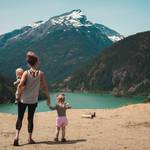General
 What is the best time to visit Costa Rica?
What is the best time to visit Costa Rica?
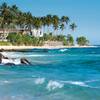 What is the climate like in Costa Rica?
What is the climate like in Costa Rica?
 How do I access internet in Costa Rica?
How do I access internet in Costa Rica?
 What NOT to do in Costa Rica?
What NOT to do in Costa Rica?
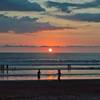 What are the most popular destinations of Costa Rica?
What are the most popular destinations of Costa Rica?
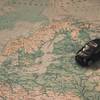 Where should I go in Costa Rica for a week?
Where should I go in Costa Rica for a week?
 What type of adapter do I need for the outlets?
What type of adapter do I need for the outlets?
 What should I pack for my trip?
What should I pack for my trip?
Transport
People
Accomodation
Food & Drink
Sightseeing
Legal
Money
Safety & Health
Family travel
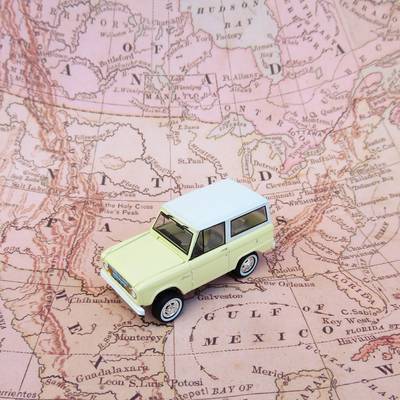
Where should I go in Costa Rica for 2 weeks?
Costa Rica is so different from other countries in Central and South America that when traveling long term and crossing borders from one country to another, you might get a feeling that you found yourself in a completely different, cleaner world.
Costa Rica is a popular travel and vacation destination for families with kids, retirees, but also surprisingly for backpackers, despite higher prices. Also, the style of traveling is a bit different as the majority of travelers rent a car to explore the natural beauty of this exotic country, and also spend less time in Costa Rica – usually ten days to two weeks.
Day 1 – 2: Corcovado National Park. One of the world's most biodiverse regions, Corcovado National Park, is a place not to miss when in Costa Rica.
Prepare to sweat, fight against mosquitos and wade through mud and rivers, but all those things will only enhance the unique experience. You can visit the park only for a day if you do not have enough time, but if you have the time you can spend up to seven days camping in the Amazonian jungle, further and longer you go, and more time you spend, the better chance to see wildlife you have.
It is not possible to visit Corcovado National Park without a guide, so book one, forget about your budget for once, and keep your eyes open to see macaws, monkeys, and maybe even a jaguar.
Day 3: Uvita. Uvita is a destination on the Pacific coast of Costa Rica, where you can absolutely unwind.
It is a pretty little town, a bit overshadowed by its famous neighbors, but totally worth visiting. Uvita lies withing Ballena Marine National Park and is most famous for its beaches, especially for Whale Tail Beach – a beach which during low tide uncovers and has a shape of whale's tail, which is even more exciting considering the fact that Uvita is a destination where you can book a tour to spot migrating humpback whales every year.
Day 4 – 5: Manuel Antonio National Park. Are you looking for a place which is mixing picturesque white sand beaches, jungle and wildlife watching?
Manuel Antonio National Park is exactly the place. You can spend an entire day in the park looking for playful monkeys and spotting elusive birds, almost invisible snakes, frogs and insects, and once tired, you can hit one of several beaches within park's area. Keep in mind, that although this national park is the smallest in Costa Rica, it is also the most popular one, and getting to the park, especially during high season can be a challenging task.
You can spend the second day by only laying on the beaches outside the national park, or you can book a night tour to explore the jungle and see animals living within its borders from a different perspective.
Day 6 – 7: Jaco. Jaco is a city on the Pacific Coast, one of the biggest in Costa Rica. Jaco has a nice long city beach, where you can spend time before hitting the streets in pursuit to find something good to eat or something nice to buy. Jaco is also known as a perfect place for outdoor activities because there is a jungle and many waterfalls around. You can sign up for ATV tours, or try one of the adventure activities such as bungee jumping, ziplining or canyoning.
Another thing you can do close to Jaco is to visit Carara National Park and the famous crocodile bridge nearby.
Day 8 – 9: Monteverde. Monteverde is the most popular cloud forest in Costa Rica. Once you enter the park, you'll be surrounded by impenetrable greenery dripping with moist, and the cloud forest will most likely look like you had ever imagined it. Monteverde Cloud Forest Reserve is an awesome place to admire fauna and flora – no wonder it's been known as a paradise for birders for years. The only downside of visiting this place is the expensive admission fee, 22 EUR per person.
You can easily spend two days in Monteverde, as you can visit the cloud forest, go for a night tour to see nocturnal wildlife, do ziplining, try to walk on hanging bridges, visit a coffee farm or do horseback riding.
Day 10 – 11: Arenal Volcano. Arenal Volcano is another significant landmark you can visit in Costa Rica. The national park protecting the area carries the same name, and you can admire the perfectly conical shaped volcano from one of the park trails or from a boat when cruising Lake Arenal. You can easily spend two days here as activities in the area are endless. The town of La Fortuna is usually the base for visiting Volcan Arenal.
Day 12: Rio Celeste. Rio Celeste in Tenorio National Park is the new must-visit place in Costa Rica. It has not been known for long, rather contrary, but the word about otherworldly blue waters of Rio Celeste has spread out (mostly thanks to pictures on social media), and more and more people have been adding this natural attraction on their Costa Rica itineraries.
You can allocate only a half day to visit the waterfall and the river in case you have a car, and later explore lush green hills around Tenorio National Park, but if you rely on our legs to get to the park, it will take you all day. The closest village where you can stay before visiting Rio Celeste is Bijagua.
Day 13 – 14: San Jose, Volcanoes. It depends where are you traveling from, but if you are coming to Costa Rica by plane, chances are that San Jose will be the first or the last destination on your trip. San Jose doesn't have the best reputation when it comes to the safety, and it also does not boast with many architectonic gems, but like in every capital city, there is always something special and noteworthy, you only need to give this city a chance prove itself.
Also, you can visit two active volcanoes close to San Jose. It is Volcano Poas and Volcano Irazu. You can reach both of them when you have a car, or you need to take a tour or public transport, but in that case, you need more than one day in case you decide on visiting both.
Poas Volcano has been really active in the past couple of years and rules for the visit are more strict, so do not forget to obtain your permission in advance when visiting independently.

Where to buy alcohol in Costa Rica and how much does it cost?

How do I use ATMs in Costa Rica?

What type of adapter do I need for the outlets?

Is it easy to get medical help in Costa Rica?

How to get to San Jose from the airport?
